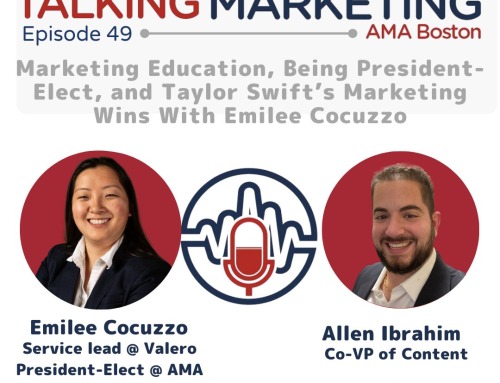
The group delivered valuable tips and case studies from their diverse backgrounds. The primary takeaways for the attentive crowd were as follows:
- Videos such as Zipcar’s play on words, with an elderly pair of ladies and some hunky young basketball players using the “Tapping” theme, are not only memorable but also powerful if they match the creative with customer profiles.
- Tom noted that “bad data is worse than no data,” and it’s better to use a professional’s educated guess than to follow data from an inappropriate source; he noted that while social media is powerful qualitatively, it is dangerous to apply quantitatively.
- The “Who” is important, but the “What” (customer activity) even more so.
- Similarly, Zipcar “trusts” their members for what they say, but combines that data with their actions, geography, lifecycle stage, and engagement with Zipcar on social media.
- Another valuable concept is to have a “content scorecard” like Verticurl. They consider the content that’s available for the stage of the process; content that fits the audience, whether a CEO or financial officer; the types of content available, from videos and white papers to podcasts and e-books; and the recency of updates.
- Tom reminded the audience of the value of qualitative research and the powers of observation, describing how Starbucks built their mobile app after watching customers glued to their mobile phones while waiting in line. From a quantitative perspective, he noted the tricky aspects of attribution in a multi-channel, off- and online world.
- Personalization was a hot topic for all the presenters. Due to its close relationship to data, creative and operations, the ability to relate to an individual in marketing channels is critical for almost every business.
- Zipcar personalizes the user’s experience using their home vs. work address, satisfaction scores and other personal experiences; they won’t offer a “Refer a Friend” program to someone who has had not had positive outcomes in the past.
- Verticurl has had strong success with old standbys like email and landing page personalization.
- Tom refers to the key aspect of context, in this case connecting the content to customer objectives. If the shopper is on a mobile and possibly in the store, they will see more product-related, hard-hitting info than a web shopper who may need history and early-stage information. Context is also crucial for Zipcar: are you a student moving to a campus, empty-nester, or sick of parking problems?
- Mobile is becoming the ultimate personalization.
- Susan asked, “what is the most overlooked marketing responsibility?” Nate indicated content operations was often give too little credit, especially today’s challenge of sharing and managing it globally. Tom noted the importance of content curation; how does a curator run a content program with the discipline of a museum, but add value?
- Best practices for content include understanding your strengths and leveraging them in your content; not only doing A/B testing in a variety of media, but also understanding what was interesting to the “losers” in the test; and assessing the possibilities of visual content, which is growing in importance with the rise of Instagram and SnapChat.
- How does creativity relate to data? Tom feels “data enables creativity,” while Nate describes the need to think beyond banner ads to content re-targeting.
- Where will the integration of content, data and creativity take us? All the panelist agree this is tricky in such a dynamic field with so many variables. Pascaline noted the importance of ongoing testing, especially four young companies like Zipcar, while Tom noted that content marketing itself is still early in its lifecycle.
- Interesting questions on what frustrates content professionals today (Nate: not getting money’s worth from technology), team development, and alignment of data brought the formal program to a close.
We look forward to seeing you at our next AMA Boston event – Getting Digital Right on November 18th!





